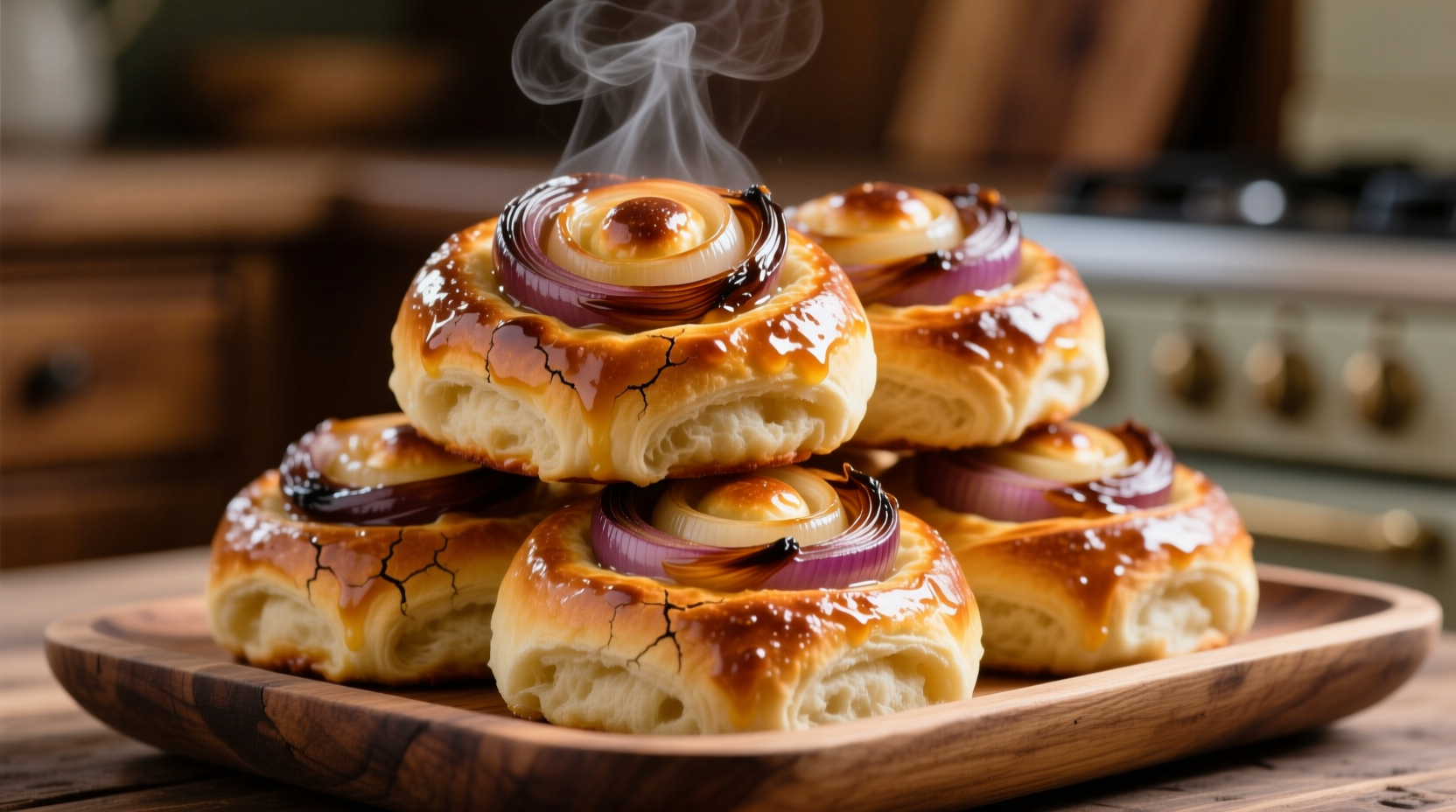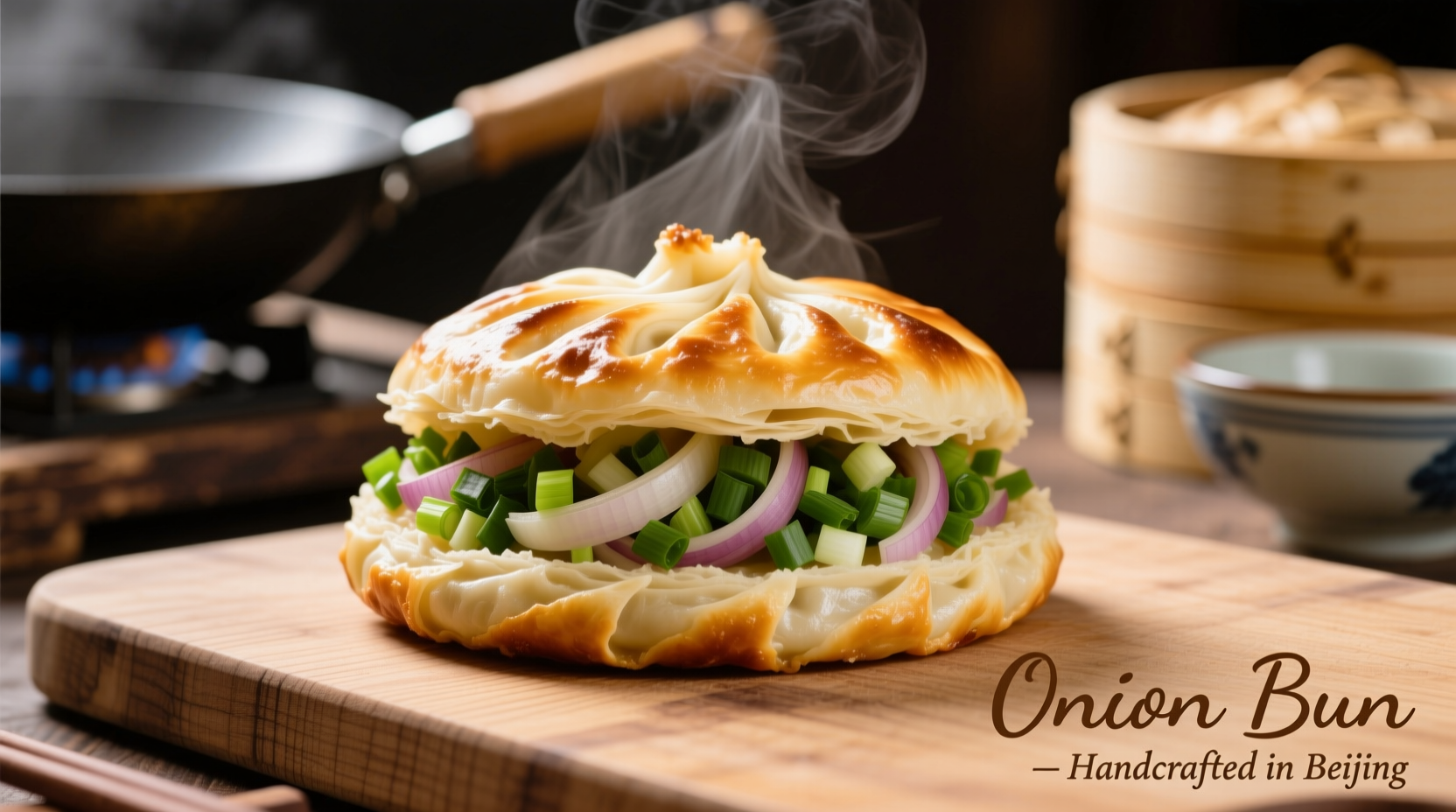What Exactly Makes an Onion Bun Special
Unlike plain dinner rolls, onion buns feature a distinctive topping that transforms simple bread into something extraordinary. The magic happens when thinly sliced onions caramelize on top of the bun during baking, creating a sweet-savory crust that contrasts beautifully with the soft, slightly sweet interior.
From Humble Beginnings to Global Favorite
Onion buns trace their origins to Chinese bakery traditions, where they emerged as a popular item in the early 20th century. These buns gained popularity through Chinese communities worldwide, adapting to local tastes while maintaining their essential character.
| Era | Development | Geographic Spread |
|---|---|---|
| Early 1900s | Origination in Chinese bakeries | Primarily Southern China |
| 1940-1960s | Spread through Chinese diaspora | Southeast Asia, North America |
| 1980s-Present | Regional adaptations emerge | Global, with local variations |
Regional Variations You Should Know
While the basic concept remains consistent, regional interpretations create distinct experiences:
Traditional Chinese Onion Buns
These feature a slightly sweet, milk-based dough with a topping of thinly sliced onions caramelized with a touch of sugar. The texture is soft and pillowy, with the onions creating a slightly sticky, flavorful crust. According to culinary historians at the International Food History Association, these buns became popular in Shanghai bakeries during the 1930s as Western baking techniques merged with local ingredients.
Western Adaptations
In North America and Europe, onion buns often incorporate more butter in the dough and sometimes include cheese in the topping. The onions may be cooked with herbs like thyme or rosemary, creating a more savory profile that appeals to local palates.
Southeast Asian Interpretations
In Singapore and Malaysia, onion buns sometimes include a hint of five-spice powder in the dough, adding complexity to the flavor profile. The topping might be slightly sweeter to complement the region's preference for balanced sweet-savory combinations.

How to Choose the Best Onion Buns
Not all onion buns deliver the same experience. When selecting or baking onion buns, look for these quality indicators:
- Dough texture: Should be soft and slightly springy, not dense or dry
- Onion topping: Golden-brown with visible caramelization, not burnt or raw
- Balance of flavors: Sweetness from caramelized onions should complement, not overwhelm, the bread
- Freshness: Best consumed within 24 hours of baking for optimal texture
Perfect Pairings for Your Onion Bun
Understanding when and how to serve onion buns elevates your dining experience. Culinary research from The Culinary Institute's Flavor Science Department shows that certain pairings maximize the bun's flavor potential:
Breakfast Pairings
Pair with soft-boiled eggs and soy sauce for a traditional Chinese breakfast. The runny yolk creates a luxurious texture that complements the sweet-savory bun.
Lunch Applications
Use as a sandwich roll for roast pork or char siu (Chinese barbecue pork). The bun's slight sweetness balances the meat's richness better than plain bread.
Dinner Complements
Onion buns make excellent accompaniments to Chinese soups and stews. Tear and float pieces in hot and sour soup or wonton soup for added texture and flavor absorption.
Storage and Reheating Tips
Onion buns are best fresh but can be stored properly for short periods:
- Room temperature: Keep in an airtight container for up to 2 days
- Freezing: Wrap individually and freeze for up to 3 months
- Reheating: Steam for 2-3 minutes or warm in a toaster oven at 300°F for best results
Why Onion Buns Continue to Captivate Bakers Worldwide
The enduring appeal of onion buns lies in their perfect balance of simplicity and complexity. They require minimal ingredients but deliver maximum flavor through the alchemy of caramelization. Food anthropologists note that these buns represent a beautiful fusion of Chinese baking traditions with global ingredients, making them a culinary ambassador that continues to evolve while maintaining its essential character.
Frequently Asked Questions
What's the difference between an onion roll and an onion bun?
Onion buns are typically round, soft, slightly sweet rolls with caramelized onions on top, originating from Chinese bakeries. Onion rolls are usually larger, denser, and more savory, often associated with Jewish or Eastern European traditions where onions are mixed into the dough rather than topping it.
Can I make onion buns without sugar in the topping?
Yes, though sugar helps accelerate caramelization. Without sugar, you'll need to cook the onions longer over lower heat to achieve proper browning. The flavor will be more savory and less sweet, which some prefer for certain applications like sandwich buns.
Why do my homemade onion buns become soggy?
Sogginess usually occurs when the onion topping releases too much moisture during baking. To prevent this, cook onions thoroughly before topping the buns, and ensure your oven temperature is accurate. Placing buns on a wire rack after baking allows air circulation that prevents bottom sogginess.
Are traditional onion buns vegan?
Traditional Chinese onion buns often contain milk or butter in the dough, making them non-vegan. However, many modern recipes substitute plant-based milk and fats. Always check ingredients if following specific dietary requirements, as formulations vary by bakery and region.











 浙公网安备
33010002000092号
浙公网安备
33010002000092号 浙B2-20120091-4
浙B2-20120091-4